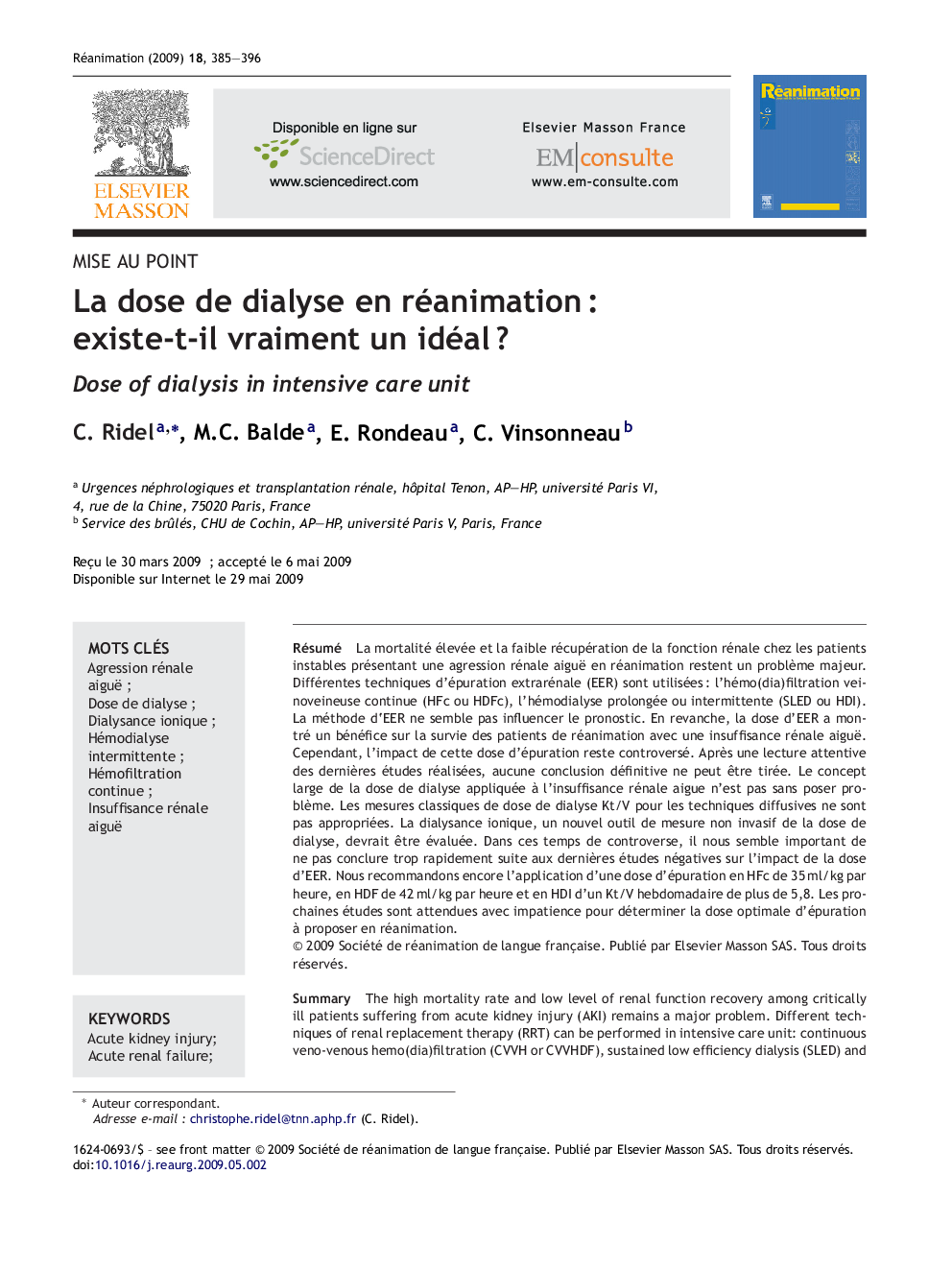| Article ID | Journal | Published Year | Pages | File Type |
|---|---|---|---|---|
| 2613232 | Réanimation | 2009 | 12 Pages |
Abstract
The high mortality rate and low level of renal function recovery among critically ill patients suffering from acute kidney injury (AKI) remains a major problem. Different techniques of renal replacement therapy (RRT) can be performed in intensive care unit: continuous veno-venous hemo(dia)filtration (CVVH or CVVHDF), sustained low efficiency dialysis (SLED) and intermittent hemodialysis (IHD). It does not appear that the method used influence the prognosis. The dose of RRT has shown an improvement of survival in critically ill patients with AKI. However, the impact of dialysis dose in RRT remains controversial. After a careful review of recent studies, definitive conclusions cannot be drawn. The broad concept of RRT dose applied to AKI can lead to many problems. Conventional measures of dialysis dose Kt/V for diffusive techniques are not appropriate. The ionic dialysance, a non-invasive measurement of the dose of dialysis, should be assessed. In these times of controversy, we suggest great attention not to quickly conclude from the light of recent negative studies on the impact of the RRT dose. We recommend the same application of RRT dose in CVVH (35Â ml/kg per hour), CVVHDF (42Â ml/kg per hour) and IHD (week Kt/VÂ >Â 5.8). Next studies are eagerly awaited to determine the optimal dose of RRT in intensive care.
Keywords
Related Topics
Health Sciences
Medicine and Dentistry
Emergency Medicine
Authors
C. Ridel, M.C. Balde, E. Rondeau, C. Vinsonneau,
